Fitness tracker vs running watch: which wearable will work wonders?
Fitness tracker vs running watch: to pay or not to pay (the premium), that is the question

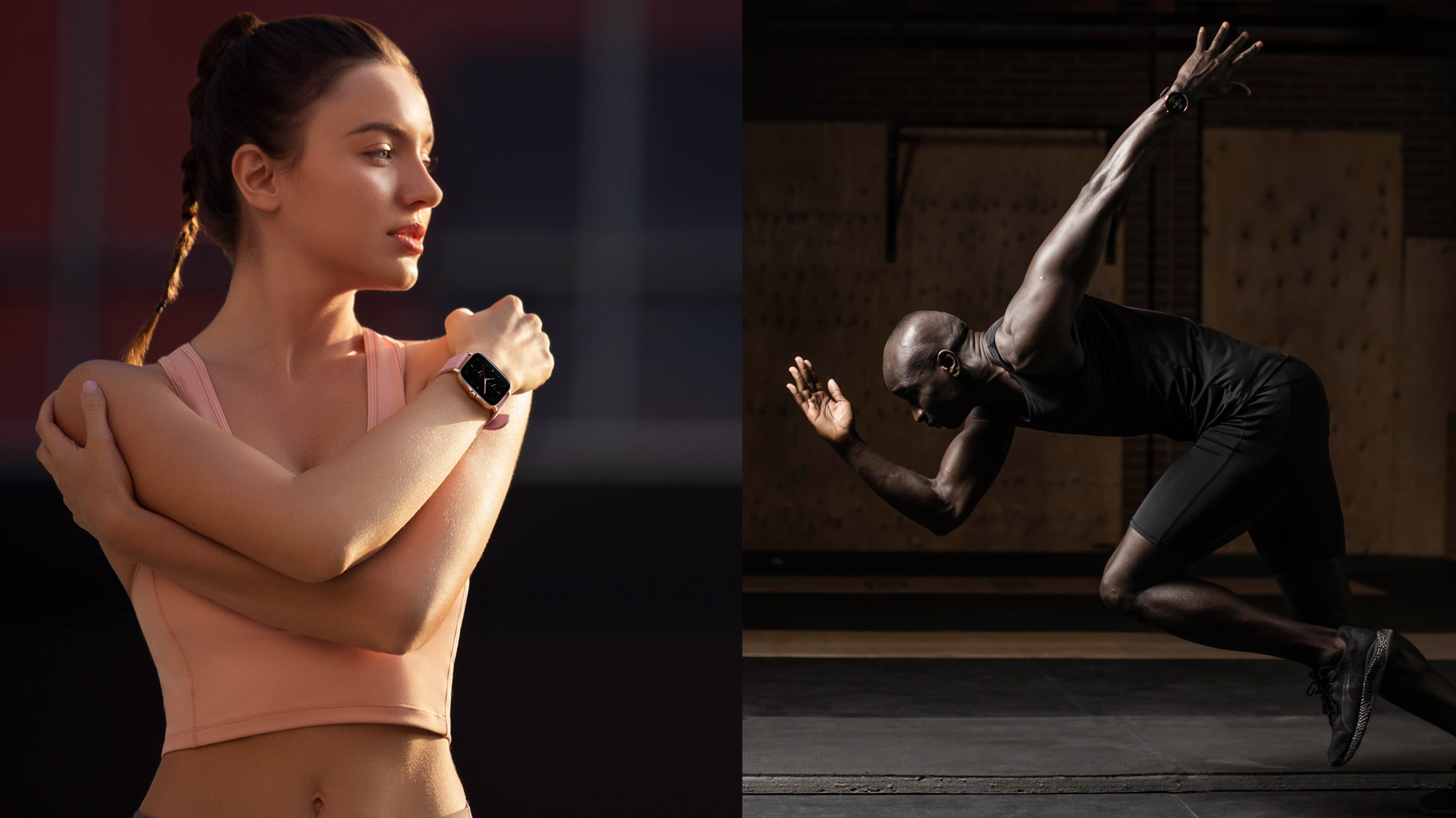
Fitness tracker or running watch is among the first questions that pop up when considering your first or latest fitness wearable. Should you invest a little (sometimes a lot) more and get a decent running watch or are you better off opting in for a quality fitness tracker? Is there a point in paying the premium for features you might not use? Where do you draw the line between premium fitness trackers and entry level workout watches?
The best fitness tracker has come a long way since the early days of clip-on pedometers. The market has been largely driven by Fitbit – and a small army of dubious clone products. Nowadays, some fitness trackers really push the envelope and blur the line between entry-level running watches and top-of-the-line fitness trackers.
The best running watches, by contrast, have long offered more features and better build quality – albeit usually for a higher price. By now, these multi-sport watches are so overpowered and offer so many features that sometimes it can feel quite overwhelming just read through the specification list, let alone actually using all the features of the watch.
This is as much of a blessing as it is a curse: although it's great that people are offered a wider selection of products to choose from, it can also be very confusing to make out what the difference is between certain products. Here are a few things to look out for when buying a new fitness tracker or running watch.
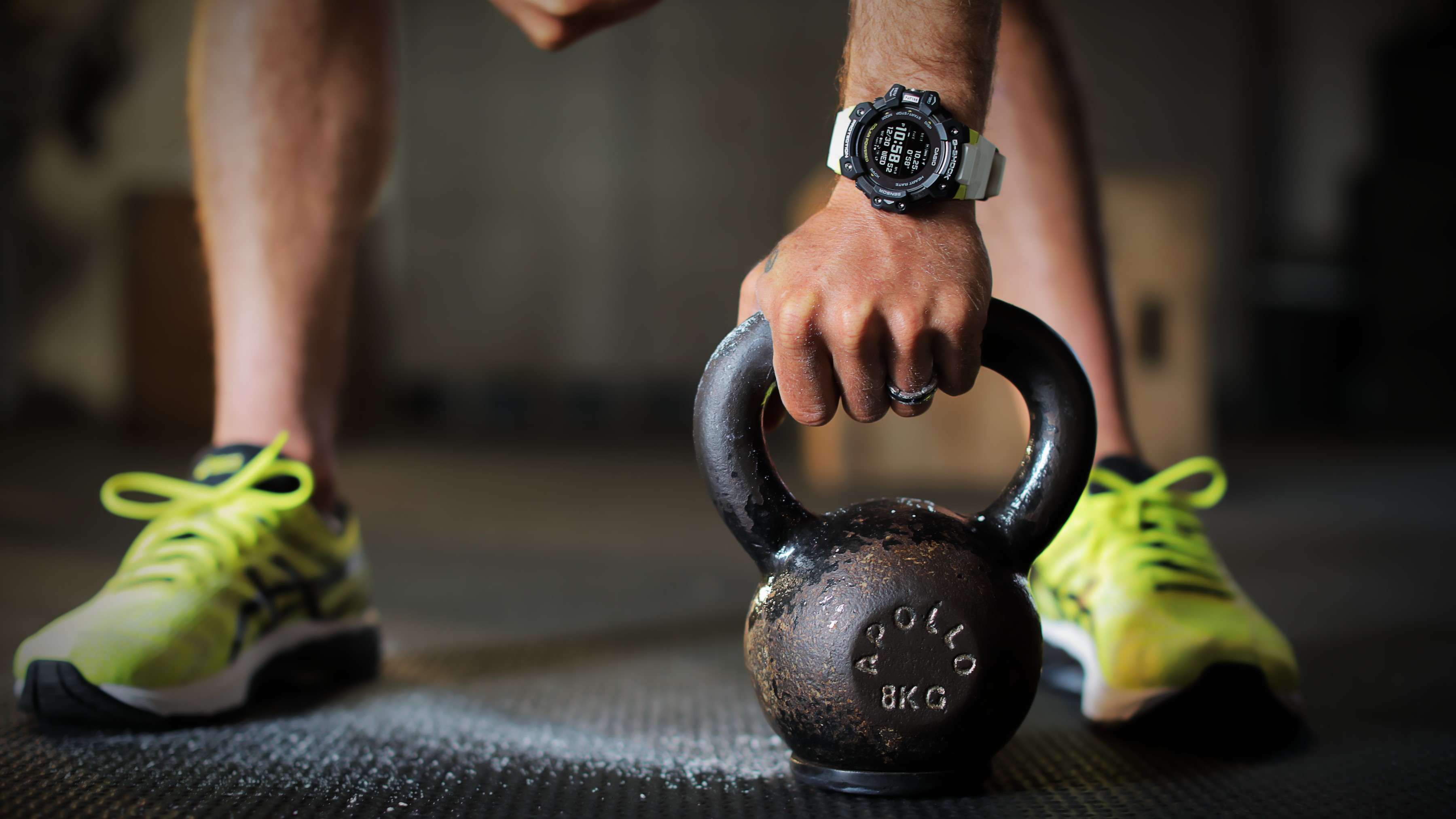
Fitness tracker vs running watch: build quality
When we talk about the build quality of any fitness wearable, it's worth talking about each section of the device separately. The main sections of any fitness wearable are the case, the bezel, the lens (glass) and the strap.
The case houses the brain of the wearable and very often it's made out of plastic. Most running watches and fitness trackers nowadays use a reinforced polymer case because it's durable and light. It is also cheaper than other options, especially considering the benefits of the material.
More premium fitness trackers, such as the Fitbit Versa 3, has an aluminium case but it's more like an exception to the rule as opposed to a general rule of thumb. Running watches, even high-end models such as the Garmin Forerunner 945 and Garmin Enduro, also have a reinforced polymer case. More rugged running watches like the Garmin Fenix 6 use titanium as a case material: it's light yet extremely resilient. It's worth mentioning that not all Fenix 6 models have titanium case.
Get all the latest news, reviews, deals and buying guides on gorgeous tech, home and active products from the T3 experts
The bezel is the ring around the lens that protects the edge of the watch. Bezels are more prominent on running watches and are often made of stainless steel or other metals. Fitness trackers have a simpler plastic construction and generally don't have a bezel.
The lens is supposed to protect the digital display of the wearable and in the best case scenario, it's made of a sturdy material such as Gorilla Glass or sapphire lens. Premium running watches, like the Polar Vantage V2, use laminated Gorilla Glass for extra protection. Fitness trackers tend to use plastic lens, not in all cases though: the Polar Ignite uses Dragontrail glass lens to protect its touchscreen display.
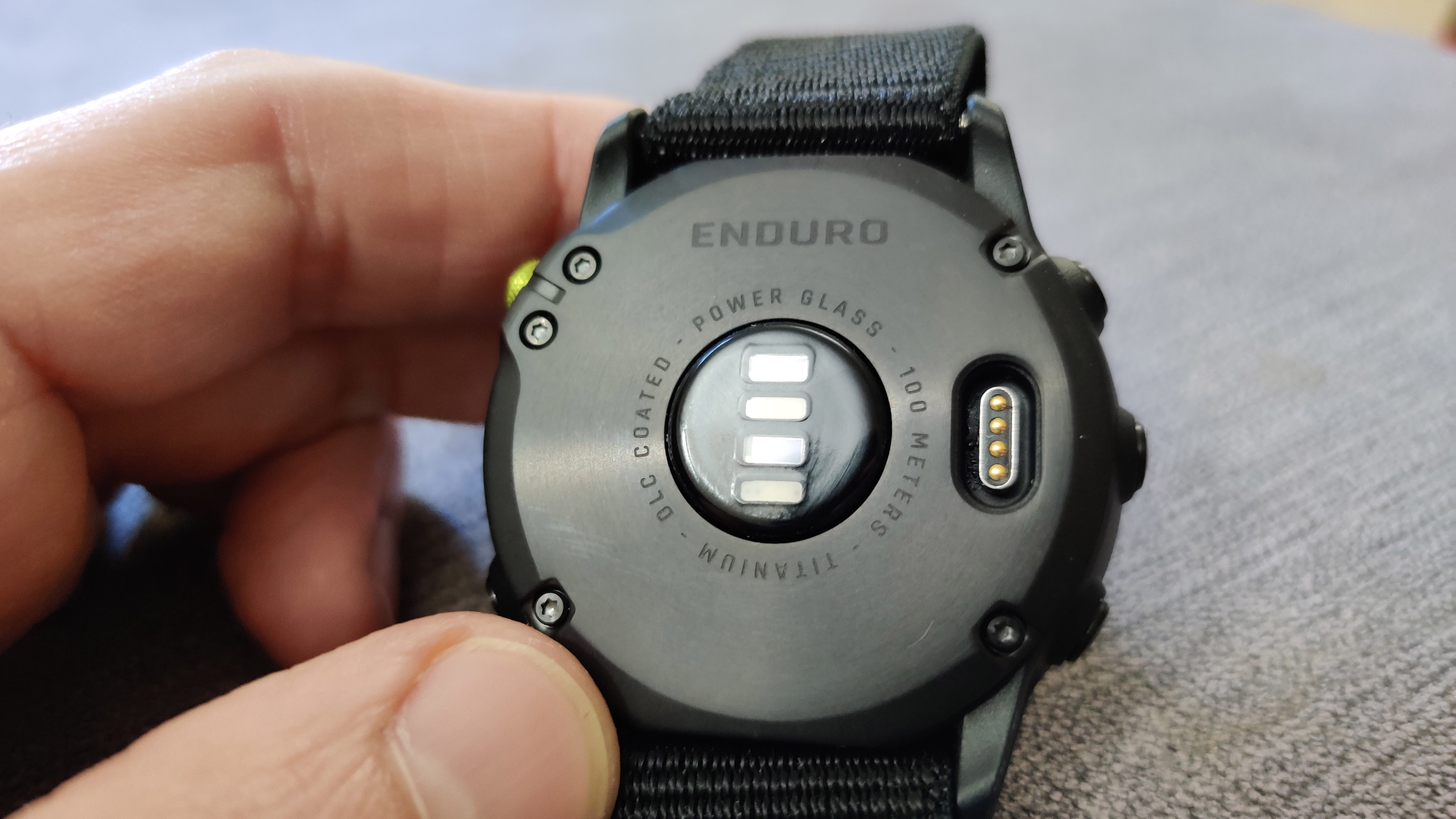
Fitness tracker vs running watch: sensors
Both fitness trackers and running watches should have built-in optical heart rate sensors nowadays: this feature used to be pretty unreliable on both but has improved significantly in the last few years. The issue is and probably forever will be the fit of the watch: there are no two people in the world having the same skin tone, amount of hair and wrist circumference, meaning that sensors will only ever be so accurate. We won't even mention stuff like sweat between the sensor and the skin that can bias readings and the fact that everyone is wearing fitness wearables either too tight or too loose.
That aside, optical heart rate sensors on both trackers and watches are pretty reliable for general use, as long as you buy a device well-established brand such as Garmin, Fitbit, Polar, Suunto etc. These brands have perfected both the hardware and the algorithm that analyses heart rate over the years, not to mention the large data pool they can sample (a.k.a. people using the wearables).
Running watches often have built-in GPS chips too whereas fitness trackers only have 'connected GPS', meaning they will only be able to track position outdoors if you take your phone with you (they use the smartphone's GPS). Proper running watches also often have ABC sensors (altimeter, barometer and compass) on board plus temperature sensors and even accelerometers, all of which provide more data for running training.
Some running watches, such as the Coros Pace 2 or the Polar Vantage V, can also measure running power on the wrist without any external sensors.
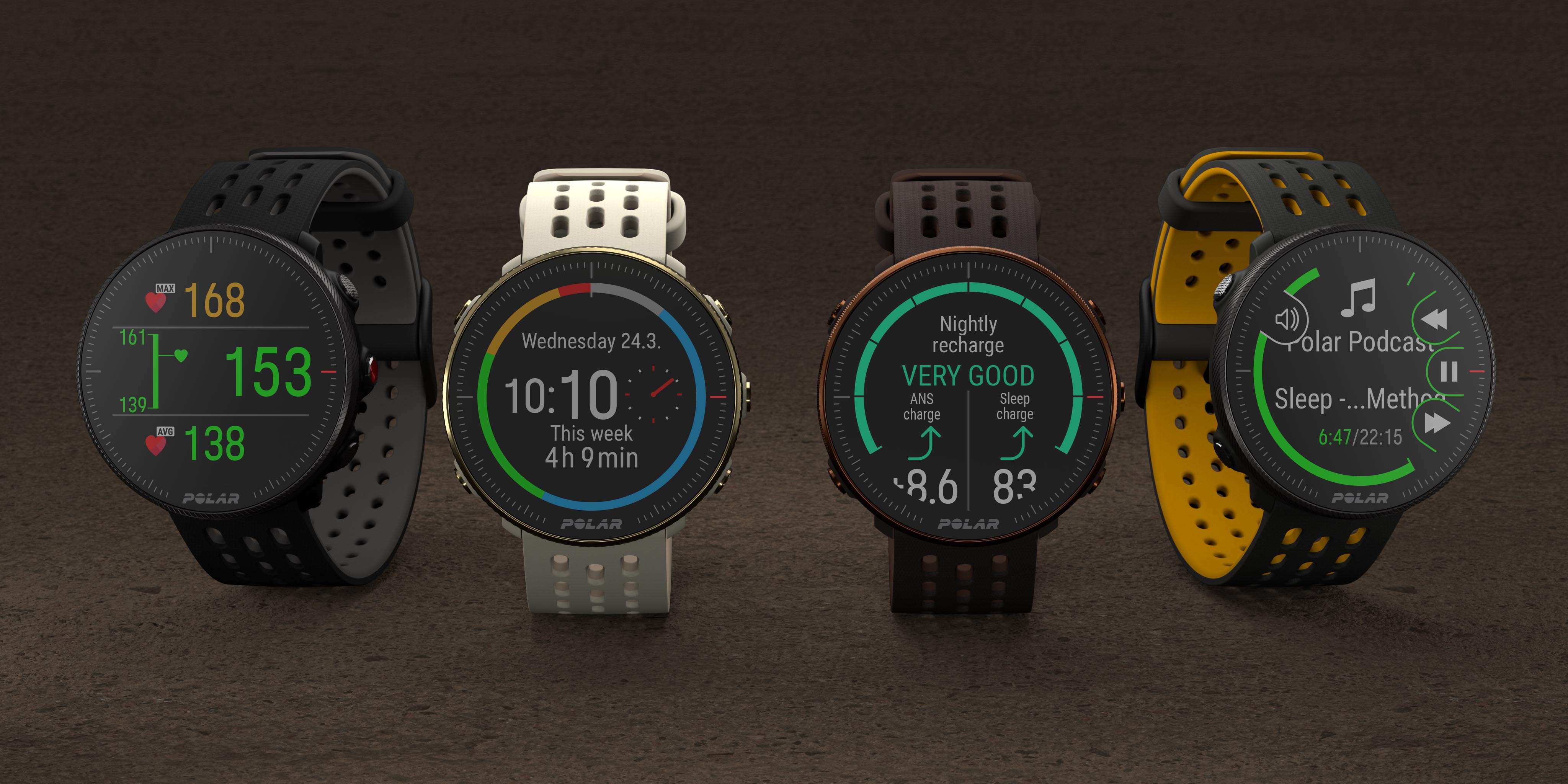
Fitness tracker vs running watch: features
Both fitness trackers and running watches have so many features by now, more than you'll ever need, really. The fitness wearable market is a highly competitive one and manufacturers tend to bend over backwards to offer more features than their competition to steal new customers from other brands.
Mainstream features found in most fitness trackers and running watches are continuous heart rate tracking, sleep monitoring – comes as standard in this day and age – different sport modes, smart notifications etc. More advanced fitness tracker features include music control and automatic physical activity recognition, while the highest echelon of fitness trackers will even measure stress, ECG and breathing anomalies, i.e. Fitbit Sense and Withings Scanwatch.
Running watches have even more features, often to aid training and/or recovery. These include adaptive training modes, recovery advisors and different methods to measure endurance performance (VO2 max). Many mid-to high-end running watches are also capable of monitoring blood oxygen levels and have a myriad of sport modes too. The new Polar Vantage M2 has over 130 sports modes, but most Garmin watches have probably the same amount too.
Premium running watches sometimes have on-board music storage and Bluetooth connectivity so you can use the watches as an all-in-one media center, one that also measures athletic performance. Please do bear in mind that listening to music on the watch while the GPS is on will drain the battery a lot.

Fitness tracker vs running watch: battery life
Battery life varies widely among fitness wearables and how long the battery will last also depends on how you use them. Having the screen/GPS on will drain the battery significantly, although running watches tend to have different battery saving modes to squeeze out every last bit of energy out of the battery.
Other watches, like the Garmin Instinct Solar, have special lens that drip-charges the battery when exposed to sunlight. In theory, in the most hardcore battery saving mode, the Instinct Solar can function 'indefinitely' without having to charge it at all. Needless to say, all sensors are turned off in this mode so it's merely a digital watch at that point.
Fitness trackers often have smaller screens and no GPS, making them last longer in between charges. Not always, though, as having a smaller case means less space for battery. As a general rule of thumb, a good fitness tracker should last for at least 4-5 days on one charge.
Some running watches will last for a day or two on one charge due to the large screen or the power-thirsty operating system running on the watch. The Suunto 7, as good of a running watch as it is, will need to be charged almost daily, thanks to the huge AMOLED screen and the Android Wear OS it runs.
If you are looking for a watch with long battery life, the Garmin Fenix series never disappoints, nor does the Garmin Enduro or the Suunto 9.
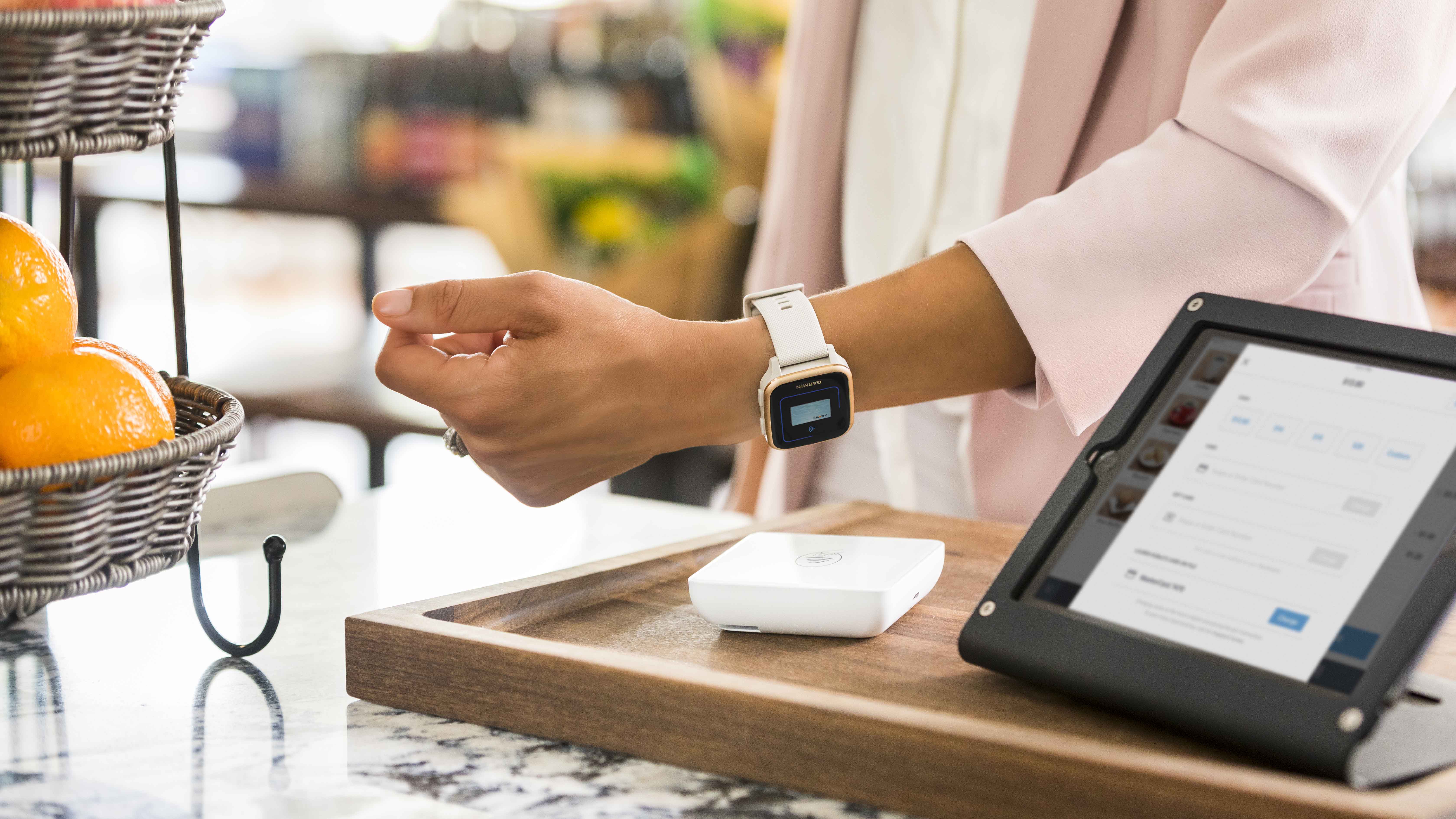
Fitness tracker vs running watch: price
Ultimately, almost all buying decision comes down to price and as you might expect, you can get a fitness tracker for way cheaper than a running watch. Well-rounded fitness trackers, like the Fitbit Inspire 2, can be bought for as little as $100 / £100 and even mid- to high-end fitness trackers, such as the aforementioned Fitbit Versa 3, won't cost you more than a couple of hundred bucks (or pounds).
Running watches can be more expensive than that: like a lot more expensive. The standard Garmin Enduro costs $799.99 / £699.99 / AU$1,249 and even mid-range running watches, such as the Polar Vantage M2, will set you back around $299.90 / £269 / AU$449. The mid-range Garmin Forerunner 245 is a great deal for around $200 / £180 / AU$379 , while a more serious Garmin Forerunner 745 can be yours for as little as $350 / £335 / AU$599.
We recommend getting a running watch if you are planning on using it to measure and improve athletic performance. For everyday use and general fitness purposes, a decent fitness tracker would do just fine. Just make sure you get one for a well-known brand. Here are the best Garmin watch deals and best Fitbit deals for you, or check out the widgets below for the best prices based on your location.

Matt Kollat is a journalist and content creator who works for T3.com and its magazine counterpart as an Active Editor. His areas of expertise include wearables, drones, fitness equipment, nutrition and outdoor gear. He joined T3 in 2019. His byline appears in several publications, including Techradar and Fit&Well, and more. Matt also collaborated with other content creators (e.g. Garage Gym Reviews) and judged many awards, such as the European Specialist Sports Nutrition Alliance's ESSNawards. When he isn't working out, running or cycling, you'll find him roaming the countryside and trying out new podcasting and content creation equipment.